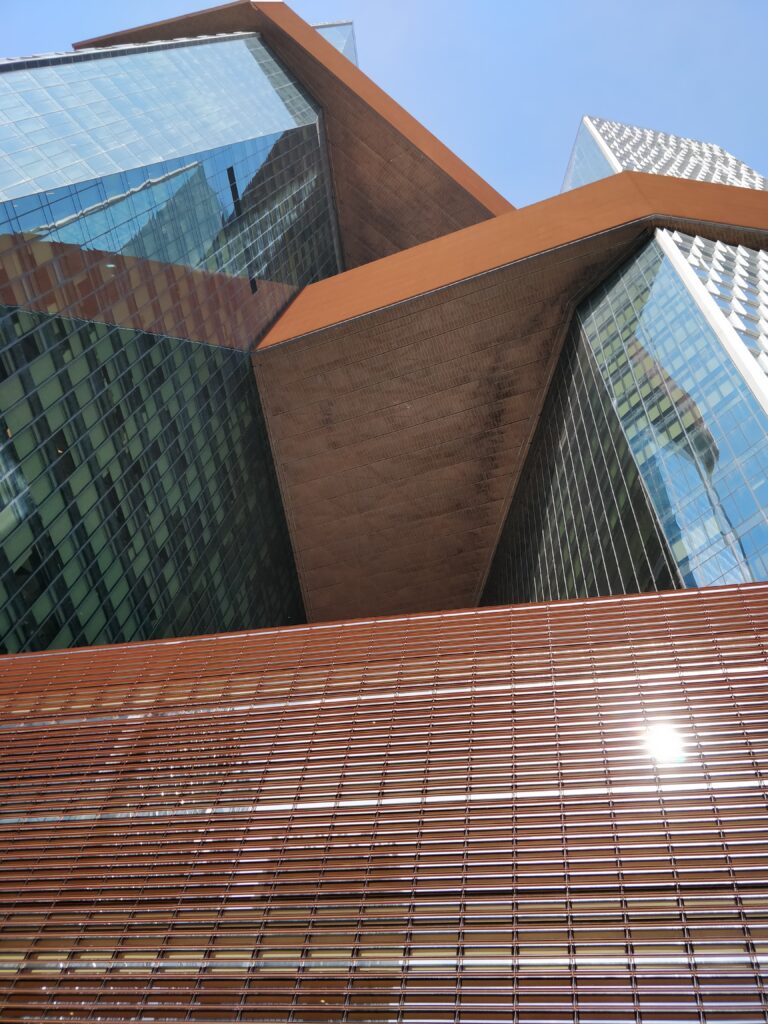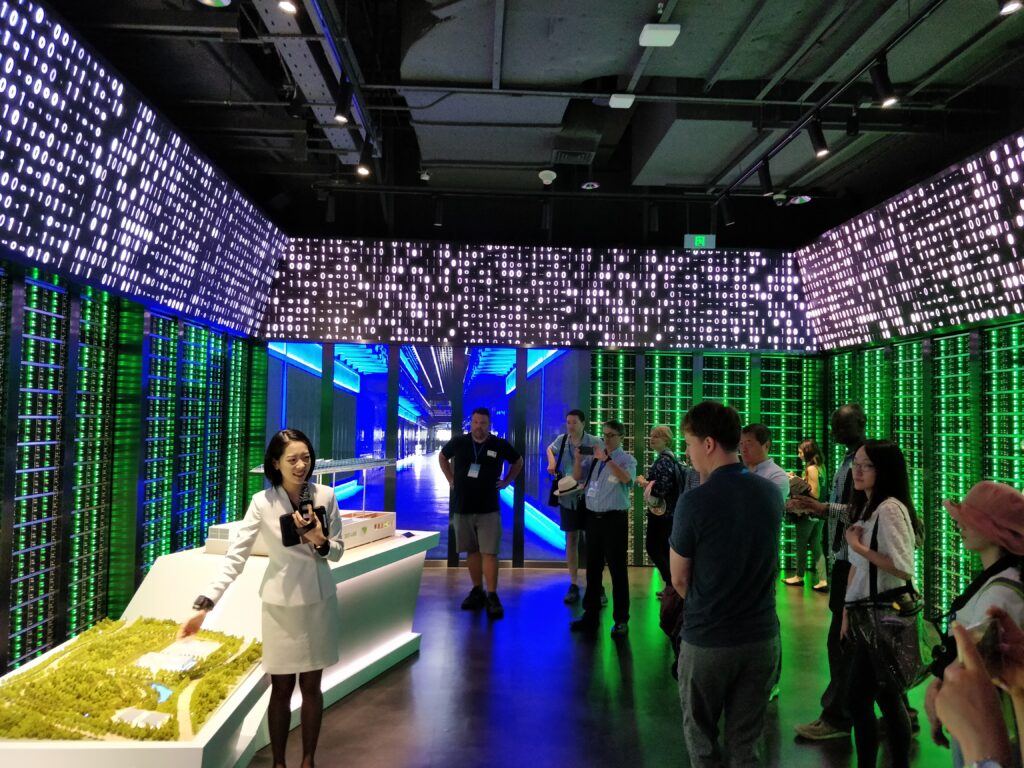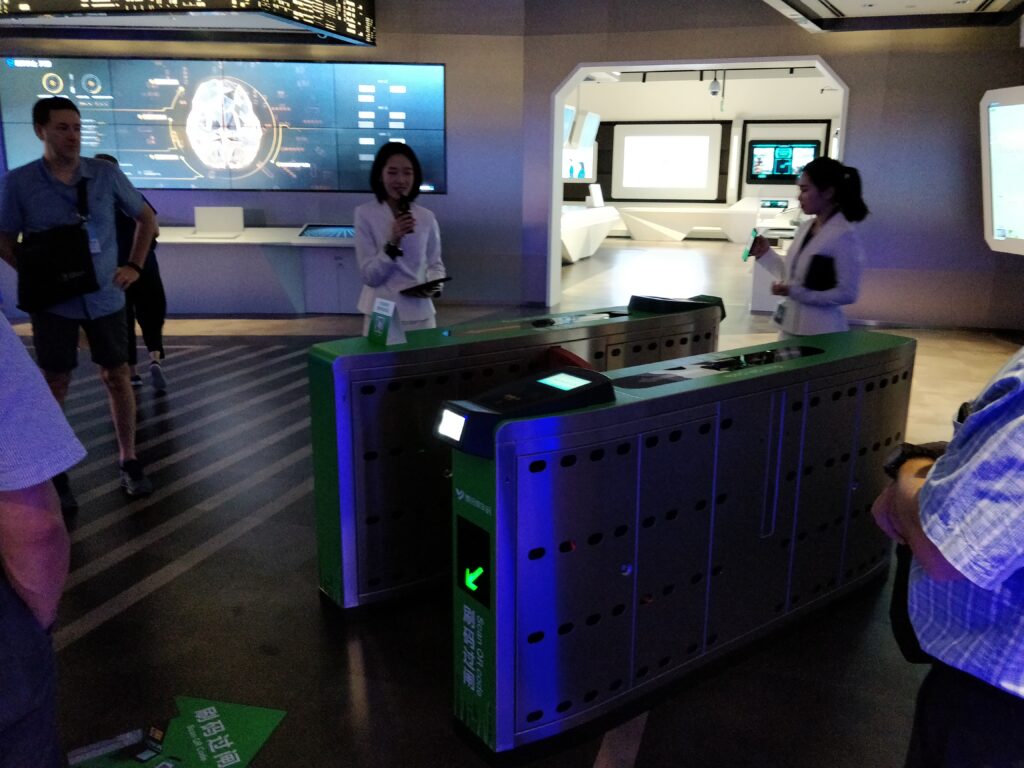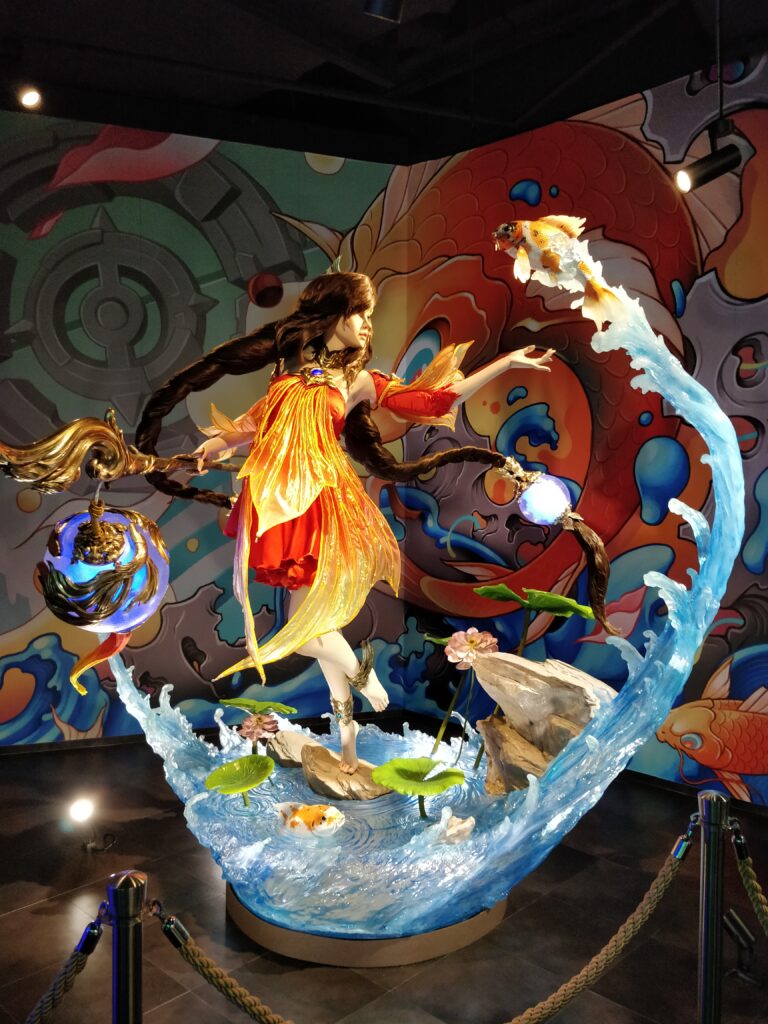Originally posted 19th July 2019
At the end of June (2019), I was back in Shenzhen and had a chance to visit and take a tour of Tencent’s new headquarters in Nanshan. This was part of the Shenzhen Forum jointly organized by the National Communication Association and Shenzhen University.
When I was in Shenzhen in 2017, I tried to organize a tour of Tencent but to no avail. Now, however, Tencent has a brand new headquarters building that includes an extremely curated tour “experience.” Although we were in the Tencent building, this was something comparable to going on a tour of the Heineken Brewery in Amsterdam – it is very flashy, but it is very clear that this is nowhere near where the beer is brewed.

A room containing a “model” of a Tencent data center was illuminated by rows of green LED lights, blinking like those on a server rack.

From this room we were led to a screening room with a massive curved screen playing a Tencent promotional corporate video (this is not the one we saw, but there are a lot of similarities to this and the flavour is certainly the same). And from there, past exhibits of robots, toys, and displays of Tencent products, all narrated by our guide who was carefully following a script. This was Tencent Disneyland.
Despite the inauthenticity of all this, there are a couple of elements of Tencent’s presentation of itself that are revealing. First, as Tencent has expanded from just an online chat service to a company offering a diverse range of products and services, one of the most notable aspects of this is move from purely digital-online services (chat, messaging, payments, etc.) to increasing its stake in the material-physical world. This is apparent with its investments in robotics, for example.
But it is perhaps most apparent in its investment in transport. In Shenzhen, it is now possible to ride on the subway by simply generating a QR code on one’s phone using WeChat and scanning it at the turnstile. In fact, this is how most people in Shenzhen now seem to “buy” a ticket. This means that the turnstiles themselves are now designed (and built?) by Tencent. A model turnstile was part of the tour.

This encroachment of Tencent not just into physical infrastructure, but also into public services is remarkable. Presumably Tencent is also collecting all the data that comes from the usage of the Shenzhen subway system. This signals not only remarkable integration of private and public in the Chinese technology sector but also new forms of integration and coordination between digital and physical infrastructure.
Second, Tencent’s the exhibition/tour foregrounds Chinese history and culture in promoting its projects. This is especially evident in gaming (or, as Tencent likes to call them, “e-sports“) and entertainment products. Many of Tencent’s games (which now produce most of Tencent’s revenue) are based on Chinese history or Chinese deities and heroes, real and imagined.

Tencent’s “Honour of Kings” (王者荣耀, also translated as “Kings of glory,” although the English version is called “Arena of Valour”), for instance, involves characters that are mostly taken (if sometimes inaccurately) from Chinese history. This deployment of history suggests interesting ways in which culture is being threaded through technologies to reinforce patriotic and nationalistic goals.
Third, the presentation of all this is also revealing for its unabashed mobilisation of technology as a force of positive social transformation. Here, again, the “Disneyland” presentation of Tencent is significant: in Tencent’s world, technology is playful, technology is fun, technology is everyday, technology is intimate. “The future is infinite,” Tencent’s corporate video announced. Indeed, Tencent is mapping out a vision for how to re-imagine one’s life — working, playing, and socializing — through (their) technology. Tencent’s technology is here to drive China into the future.